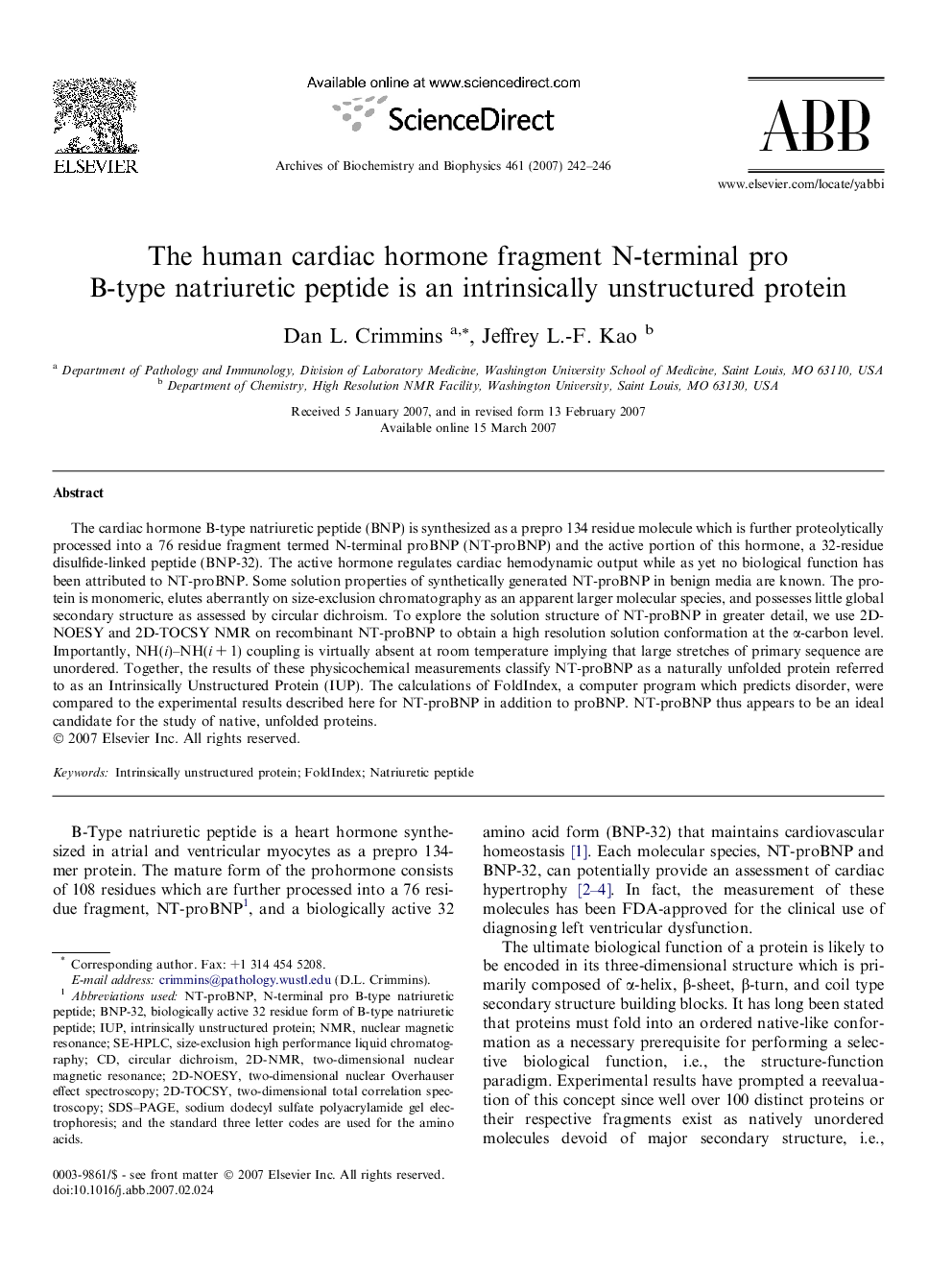| Article ID | Journal | Published Year | Pages | File Type |
|---|---|---|---|---|
| 1927180 | Archives of Biochemistry and Biophysics | 2007 | 5 Pages |
The cardiac hormone B-type natriuretic peptide (BNP) is synthesized as a prepro 134 residue molecule which is further proteolytically processed into a 76 residue fragment termed N-terminal proBNP (NT-proBNP) and the active portion of this hormone, a 32-residue disulfide-linked peptide (BNP-32). The active hormone regulates cardiac hemodynamic output while as yet no biological function has been attributed to NT-proBNP. Some solution properties of synthetically generated NT-proBNP in benign media are known. The protein is monomeric, elutes aberrantly on size-exclusion chromatography as an apparent larger molecular species, and possesses little global secondary structure as assessed by circular dichroism. To explore the solution structure of NT-proBNP in greater detail, we use 2D-NOESY and 2D-TOCSY NMR on recombinant NT-proBNP to obtain a high resolution solution conformation at the α-carbon level. Importantly, NH(i)–NH(i + 1) coupling is virtually absent at room temperature implying that large stretches of primary sequence are unordered. Together, the results of these physicochemical measurements classify NT-proBNP as a naturally unfolded protein referred to as an Intrinsically Unstructured Protein (IUP). The calculations of FoldIndex, a computer program which predicts disorder, were compared to the experimental results described here for NT-proBNP in addition to proBNP. NT-proBNP thus appears to be an ideal candidate for the study of native, unfolded proteins.
